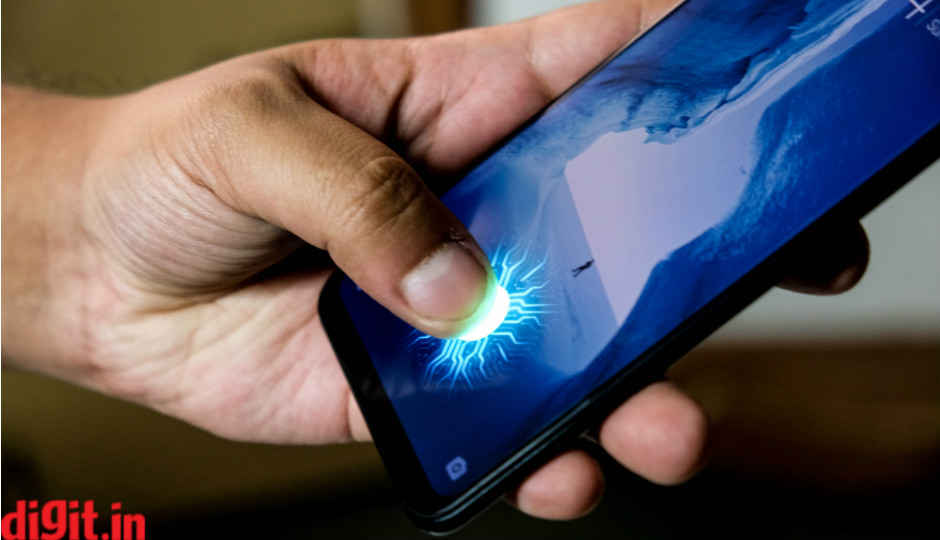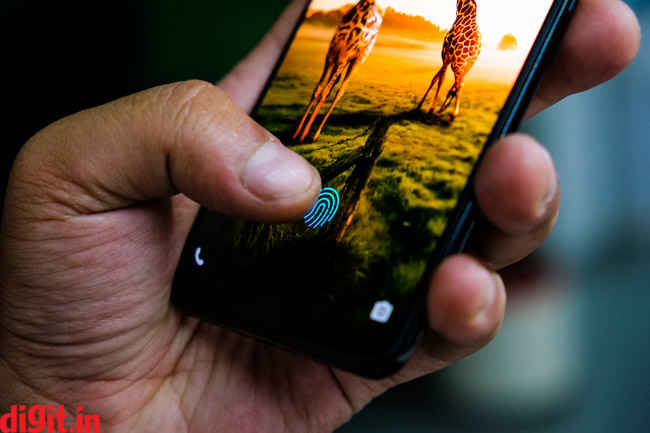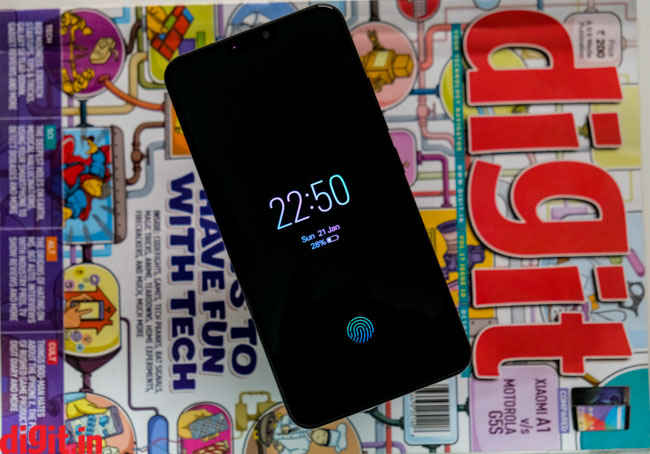Vivo X21 First Impressions: Quite generic if not for the in-display fingerprint sensor
The Vivo X21 arrives in India touting an in-display fingerprint sensor along with all the features that are in-vogue in 2018. Here's our initial thoughts on it.

The fingerprint sensor on a smartphone is now taken for granted. It has become such a common sight these days on smartphones that its presence goes mostly unnoticed. But its reliability of securely authenticating the owner is unparalleled by far, even with the advent of facial unlock and iris scanning. It remains to be the most intuitive and easiest way of unlocking and authenticating. But in the journey to give the display up front more real estate, the fingerprint sensor has been pushed around a lot. From being embedded in the home button, it got shifted to the back. Some even placed it along the edges, embedded in the power button while some removed it altogether.
 Survey
SurveyWhile the first fingerprint sensor was introduced by Apple in the iPhone 5S, it’s a Chinese company that found the answer to keep the fingerprint sensor at its rightful place and not compromise with the screen real estate. Vivo raced to be the first phone to tout an in-display fingerprint sensor that doesn’t mess with the aesthetics up front. The Vivo X21 has the sensor embedded inside the OLED panel. Sounds cool, right?
The Vivo X21 launched today in India for a price of Rs 35,990 with the attention mostly on the future-forward tech. Now there are a couple of manufacturers who are working on making in-display fingerprint sensors. The X21 uses the solution developed by Synaptics. It’s an optical fingerprint sensor that relies on a CMOS sensor to detect fingerprints. But wait, isn’t CMOS sensors used in cameras? Well, it’s a similar application. Just how a CMOS sensor on a camera can capture light and along with it, the details that eventually make the photograph, the in-display fingerprint sensor on the Vivo X21 also lights up the area of the screen to detect the unique patterns of your fingers.
The technology is definitely quite different from the physical capacitive fingerprint sensor which relies on electronic impulses to detect the ridges of your fingerprints. Capacitive fingerprint sensors that sits on phones like the OnePlus 6, iPhone 8 and the likes have evolved to such an extent that it just needs some 0.03 seconds to unlock a phone. In comparison, the in-display fingerprint sensor on the Vivo X21 is much slower. In the few minutes I got to play around with the phone, it took around a second (or a little more) to unlock. Being used to the phone unlocking in a snap, that one second wait felt much longer. There were also a few occasional misses. But nevertheless, the usefulness of the technology in the future isn’t lost on me.
But is the feature reason enough to buy the Vivo X21? Not really. It’s certainly novel, but that’s about it. The Vivo X21 looks pretty much the same as any other high-end phone from 2018. Glass body, notched display and dual cameras. If all that seems like an attractive proposition, there are other options as well, namely the OnePlus 6 and the Honor 10. But this is definitely one of the better phones from Vivo. The Vivo V9 that launched earlier didn’t have much to go for except for the notched display, but the X21 actually offers impressive hardware under the hood. There’s Qualcomm’s Snapdragon 660 chipset coupled with 6GB of RAM and 128GB of storage. The chipset also powers the Nokia 7 Plus, which is much more affordable at Rs 25,999.
However, the Vivo X21 justifies the price primarily through the future-forward technology. But other than that, there’s a vertically aligned dual camera module at the back and a 12-megapixel camera at the front. The primary sensor at the back is also of 12-megapixel and both the front and the rear camera relies on dual-pixel technology, that allows for faster autofocus and better low-light performance. There’s also the usual AI-speak and Vivo claims the cameras at the front and the back relies on AI to make the images better and learn your ‘beauty settings’.
What’s more interesting is how the FunTouch OS 4.0 looks and works similar to iOS. It has an identical notification panel, the swipe-from-bottom control panel, gestures-based navigation and even the camera app apes the iPhone, right down to the portrait lighting effects. It’s still too early to give a verdict on how good the camera is, but if what Vivo claims is true, it might give the high-end phones some competition.
The design, however, is quite premium. The Vivo X21 has a glass-sandwich design, but I’m not sure whether there’s Gorilla Glass rendering durability. It’s also quite light and in hand, the phone feels very fluid what with the 90 percent screen-to-body ratio and slim edges. There’s minimal bezels on the sides. Even the lip at the bottom is a thin line below the display.
The Vivo X21, at the end of the day, would have been a me-too phone if not for the in-display fingerprint sensor. The technology is still in its nascent stages, so to recommend the phone just for the sensor would be overkill, but otherwise, this is perhaps the smoothest phone from Vivo I have used.



